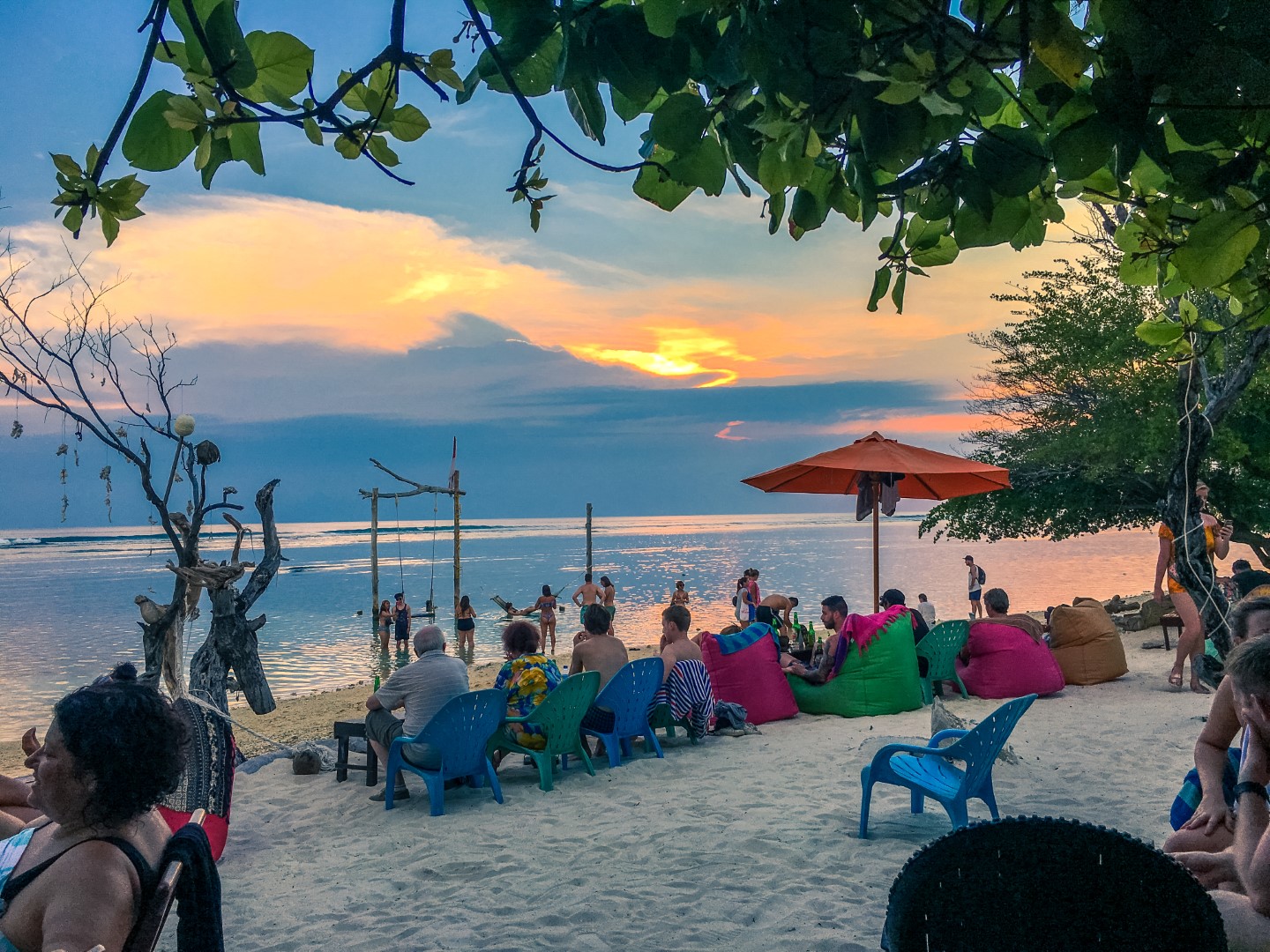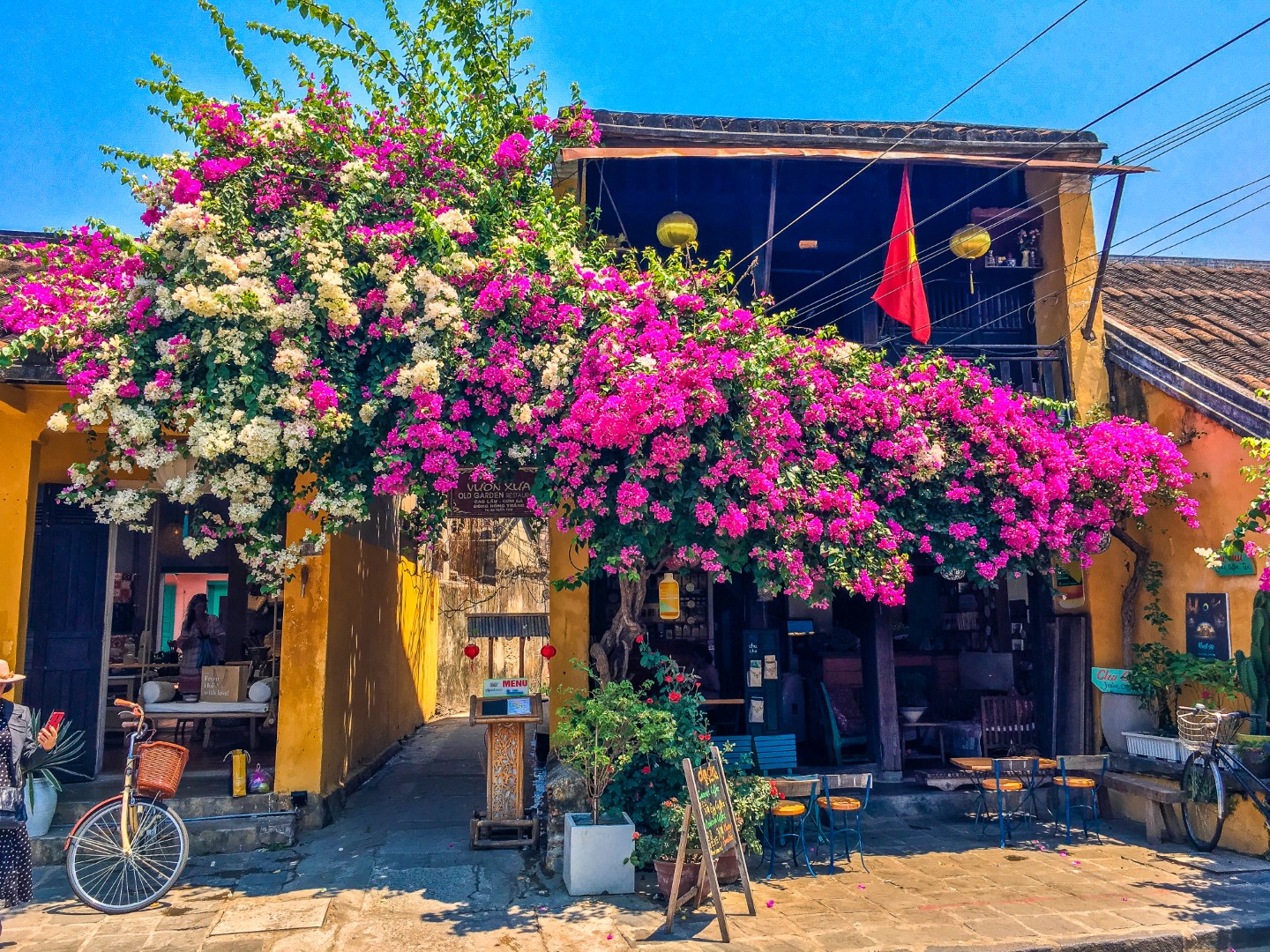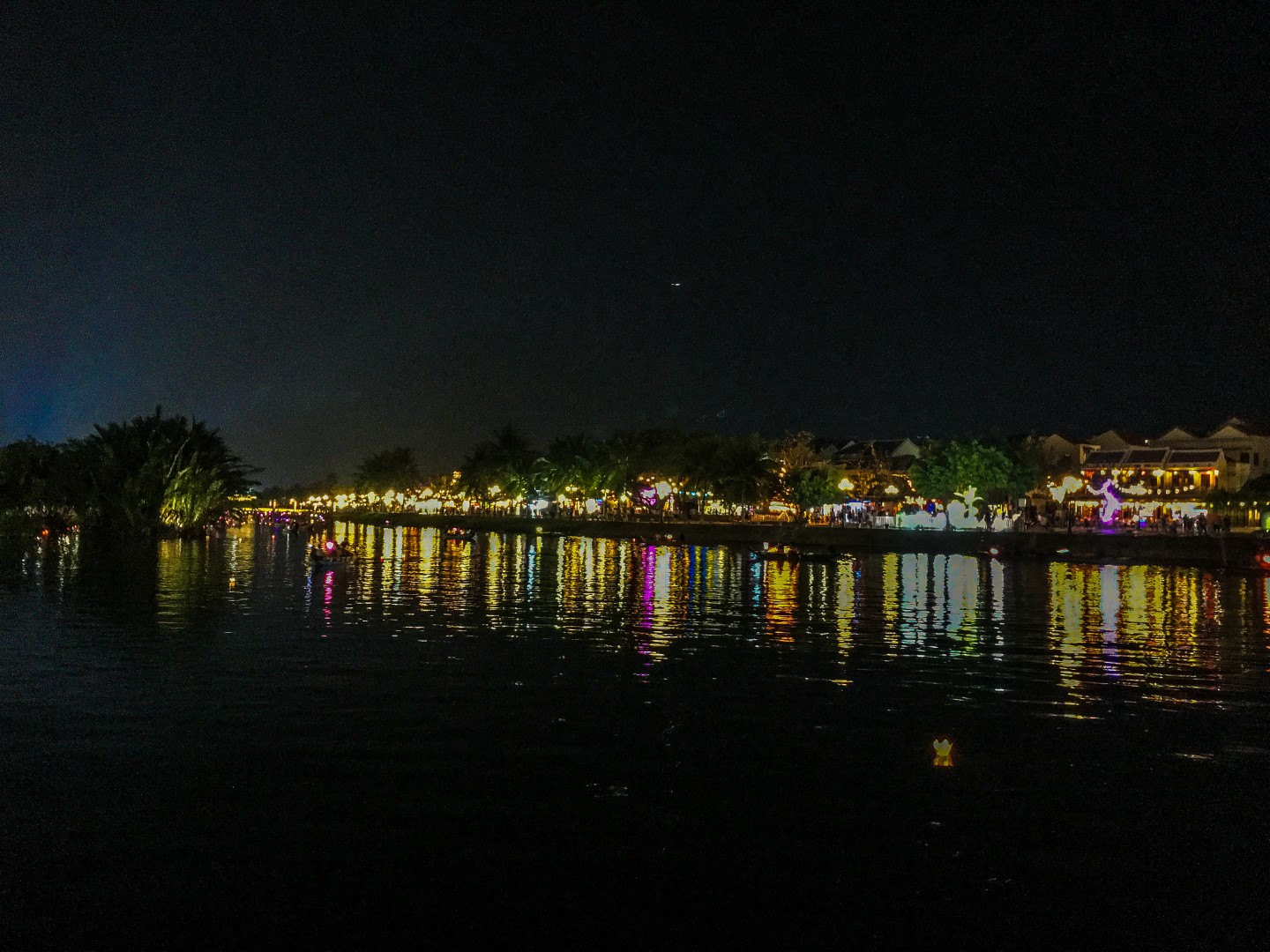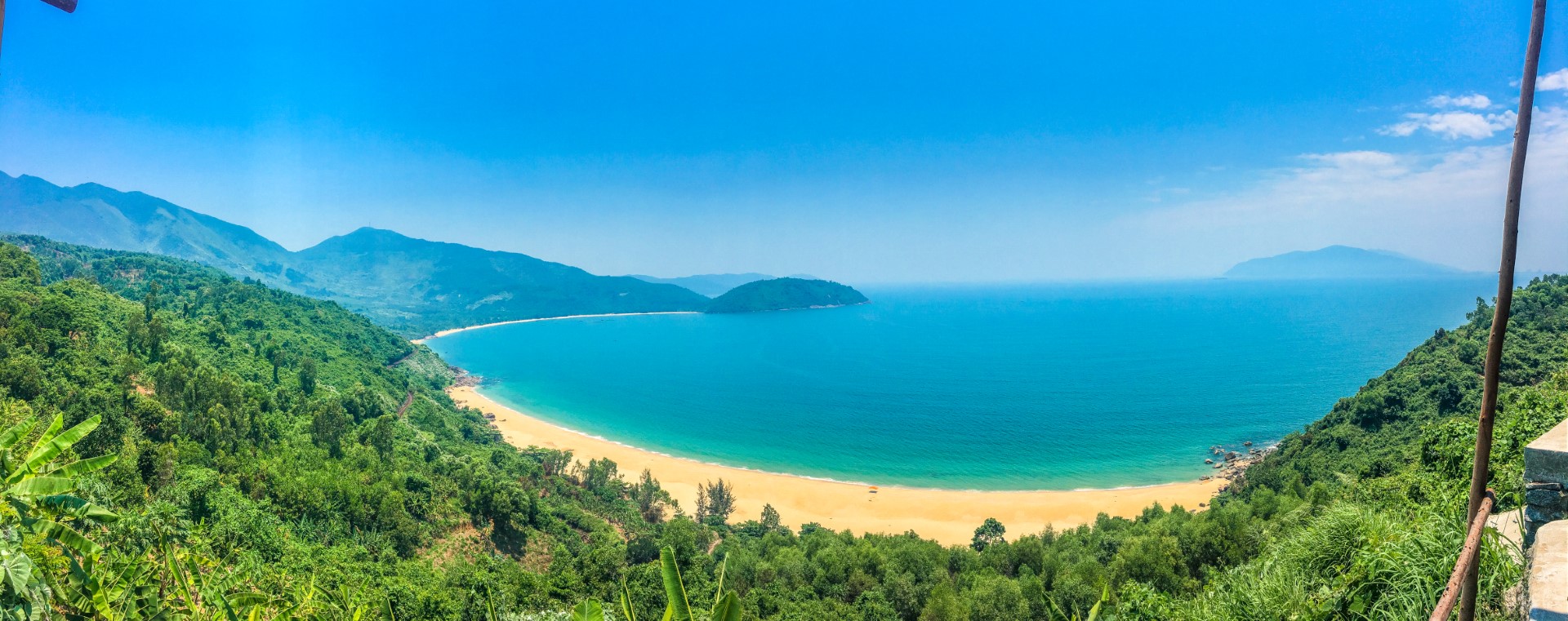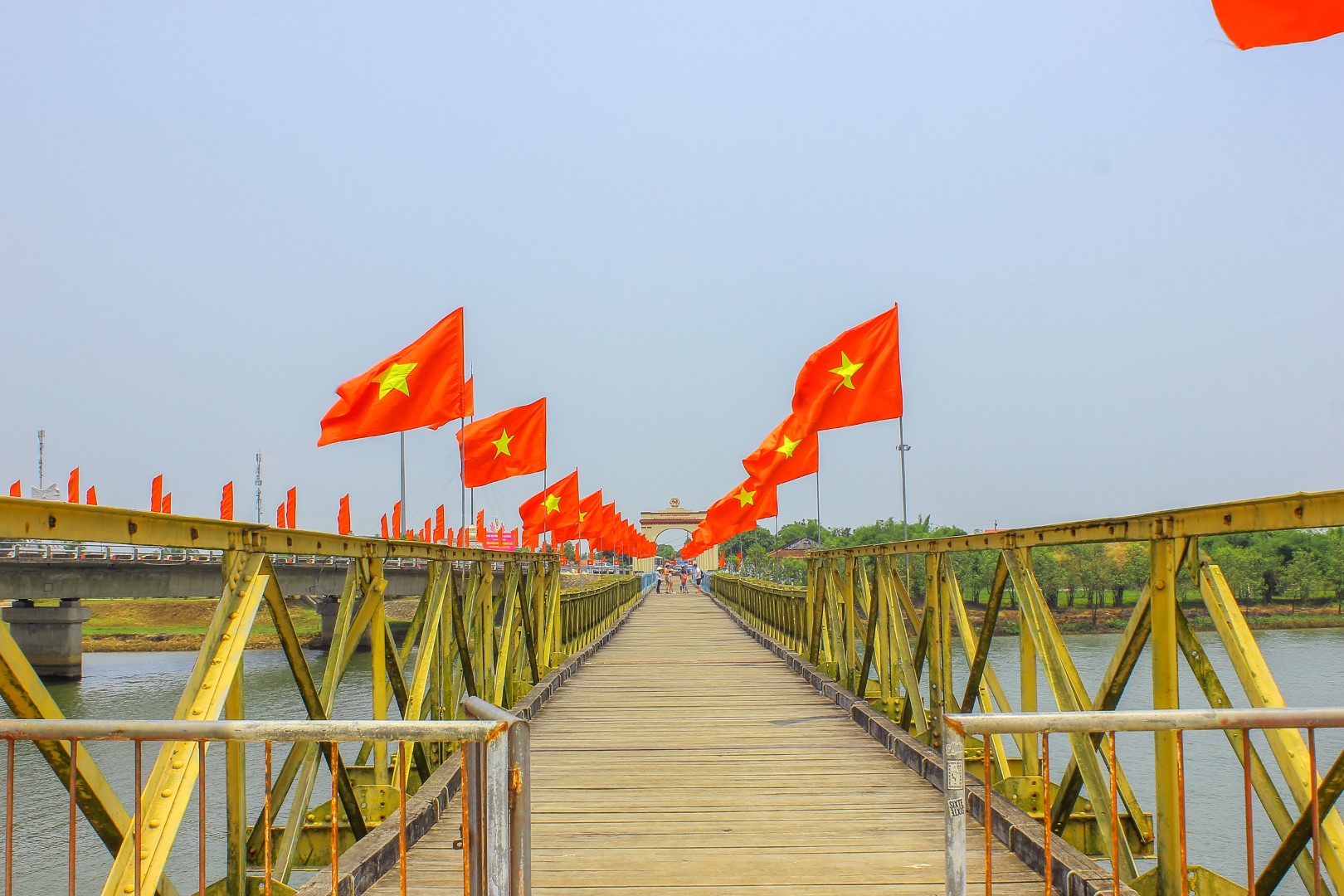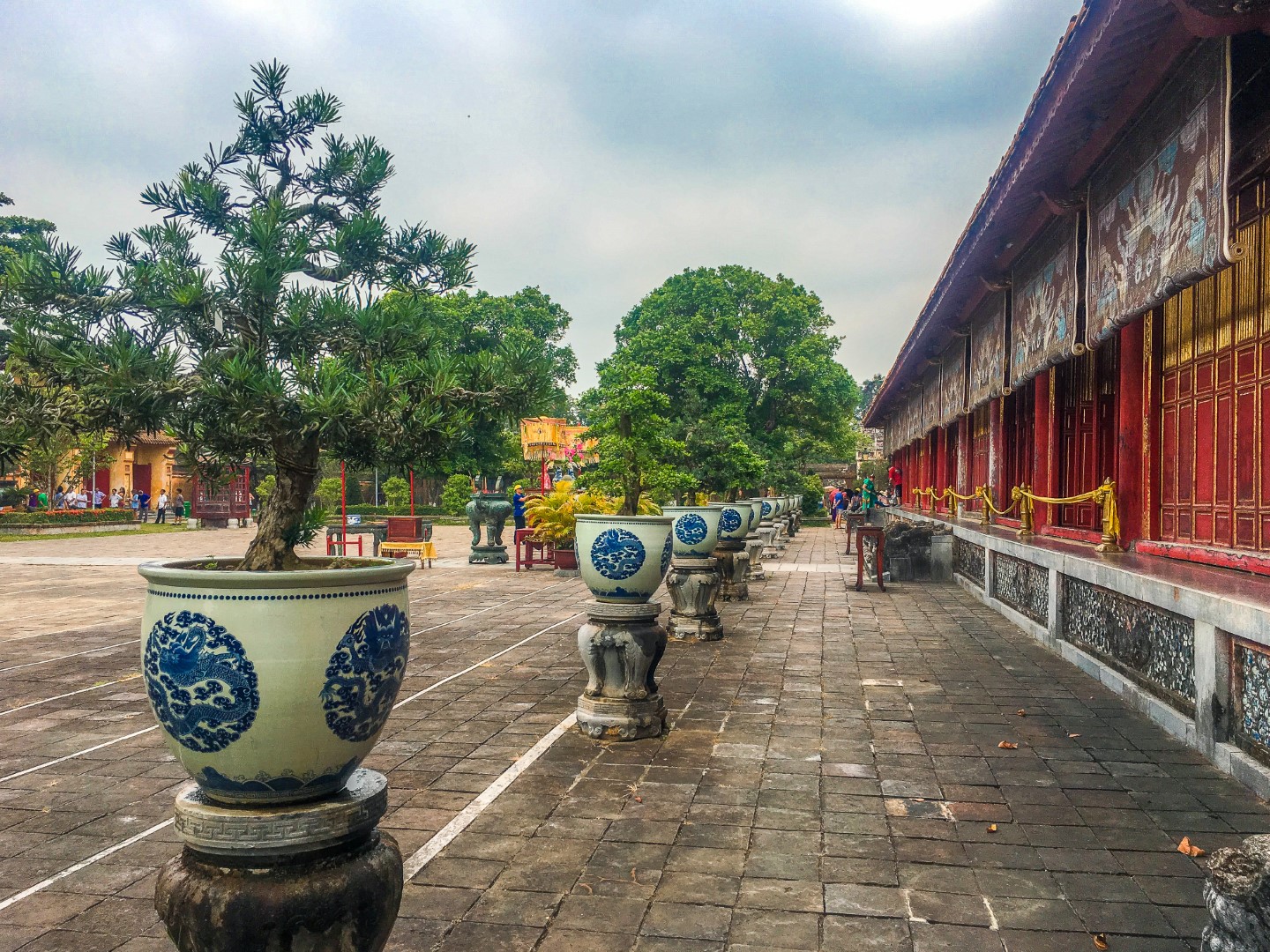Today, we take on the hordes at the famous Citadel of Hue. Before that though, another sumptuous breakfast in the courtyard of the grand old lady. Beneath the shady trees, strategically perched within wafting distance of the pedestal fans. I’m still under dressed in tights and my t-shirt; other ladies drift through the buffet in floating, effortlessly elegant resort-wear.
The Citadel is not far from the Saigon Morin, but we hitch a ride in a taxi. Duck and weave through swelling crowds – Reunification Day draws ever closer and the locals are keen in enjoy their holidays. I lose count of the number of tour buses pulled up in the carpark near the entrance to the Citadel, but I think it must be at least 30.
The immense Ngo Mon Gate stands guard at the entrance to the citadel. It’s a statement. Enormous, imposing, multi-levelled. It sits atop the wall, green and yellow tiled roof and ornate carvings and reliefs festoon the ridges, peaks and corners. It’s grand and regal and imposing. The centre doorway closed to those of us without Vietnamese royal blood. Locals file in on the right, foreigners on the left. The multi tickets we bought yesterday covers our admittance today, and we sail through the check in line without issue. Beyond, the citadel lies in sun-baked splendour.

We immediately breakaway from the guided tours, their little coloured flags on telescopic poles are being waved with alarming frequency. Heading for the southwest corner of the citadel, we walk down down a leafy avenue. Electric golf buggies trundle past, laden with old aunties and uncles on their own little tours. There’s a lot of people here, but it’s not as noisy as you’d imagine. I listen to the footsteps falling on the stone pavements, soft and slightly gritty. Voices rise, and fall again, as we pass various gates and monuments. Imposing, colourful gates cut into the inner walls, their doors locked for unknown years. I decide they warrant closer inspection, and find relief carvings and seashell mosaics camouflaged by peeling paint and weather beaten stone. There’s a dedicated attention to detail on these gates that sometimes goes unnoticed. The larger the gate, the more incredible the detail. Near the Hung Mieu temple, we come across one of these gates. Painted brilliant red and yellow, with three roofs and three doors, the gate looks grand. In addition to the mosaics and relief carvings above the doorways, there’s ornamental dragons on the roofs, each curling at the ends.
It’s not just the gates that are magnificently vibrant. Royal residences and temples are painted auspicious golden yellow, shingled roofs are red or blue, and the remnants of the old palace are painted a glorious shade of scarlet. Doors are trimmed elegantly with gold, adding to the regal feel. Courtyards are framed by gloriously green gardens and an endless number of trees. Frangipanis, palm trees and mango trees, long garden beds of flowering shrubs and brightly coloured blooms. The gardens hem the stone pathways and courtyards, a shock of green against golden yellow temples, libraries and royal residences. Plants are an integral part of the designs. Even pot plants have a part to play in the courtyards, with bonsais lined up in blue and white pots.

In front of the Thê Miêu temple stand the Nine Dynastic Urns. One urn for each emperor of the Nguyen era. Cast in bronze, the urns stand stoically in the courtyard, each covered in various impressions of stars, animals (both real and mythical), rivers, seas and mountains of Vietnam. Each urn is different, symbolic of each emperor. The place is steeped in history. Elsewhere we find piles of brick and holes in walls – scars from the war with the Americans. Entire sections of the citadel no longer exist, as the area was targeted so heavily by the Americans. The Purple Forbidden City was home to the Vietnamese emperors but now its mostly just green fields and few piles of bricks. Only a few sections have been saved or rebuilt. Tourists are asked to use their imagination when they stand in front of the old site. The thought of a palace even more glorious that the buildings we’ve already seen in the citadel being shelled and bombed to non-existence is incredibly sad. As is the devastating loss of life that accompanied it. We walk through one of the remaining corridors, which would have lead to the mandarin’s quarters. Strong, heavy wood, shining red lacquer and fine gold accents, it is every bit as exotic and regal and impressive as I picture an East Asian palace to be.
Another left turn, and we head through rolling gardens complete with koi ponds and more beautiful bonsais. The path snakes through more gem-green lawn, over a small brook and past fairy-sized cities perched on mini-mountains. If you’re not paying attention, you’ll miss them. Tiny dragons, and tiny fisherman with minuscule fishing poles. Around, we find various halls; some for meditation, some for literature and reading, others for healing and medicine. Occasionally, ladies in purple uniforms appear. They’re watering gardens and sweeping the concrete floors of the temples and halls. I spot one having a little snooze in a quiet corner of the literature hall, leaning against the huge wooden pillar. Others are sitting in the shade of a tree, sharing lunch. Shirtless men are working on restoring a theatre, shovelling sand and moving bricks by the barrow load in the burning sunlight. It’s above 30 degrees now, easily.

Towards the east gate, we find a cafes serving cold drinks and the usual Vietnamese coffee. Thoroughly roasted and sweating bullets, I make the executive decision to park my ass and order a huge bottle of freezing cold water. Aunty laughs as she points a pedestal fan in our direction and brings us a packet of tissues to wipe our face with too. “Too hot today,” she says, handing me a bottle of water. I agree. It’s almost lunchtime, and we’ve been walking for hours. We decide to head back to Saigon Morin, for a swim.
Catching a taxi from outside the citadel east gate isn’t as easy we expected. Mostly, its private cars picking up small tour groups and buses picking up their hordes. Traffic is busy, confusing and snarled, as parking here is something like the Hunger Games. Despite the traffic, there’s not a taxi to be seen. We walk, ambling in the dappled shade of the huge trees. No far from the exit gate of the citadel, we find the Hue Museum of Royal Antiquities. Another long teak hall, with yellow tiled roof and protective dragons on the peaks. The lush gardens are neatly manicured, with more perfect bonsai and ancient looking bronze cannons. Some clever individual has fitted glass doors to the entirety of the hall, and it is crisply air conditioned. We cast our eyes over coins, weapons, musical instruments, furniture and protective amulets that once belonged to the Nguyen dynasty. Floor boards creak beneath our bare feet. There’s even royal robes hanging from a rod, behind glass. A set for the emperor, his wife and the concubines. Complete with slippers and intricately decorated fans for the ladies. The museum was clinging tightly to a past era of regal finery and royal power. Imagine the place Hue might have been if the emperor still ruled.

Despite the detour through the museum, there’s still no taxis in sight and we make the decision to walk back across the Perfume River to Saigon Morin. Its not too far, Husbando assures me. We pass a graveyard of US Army remnants – cannons, tanks and planes. Seriously, did they take anything home with them? Back out on the main road, we dodge more traffic careening toward the citadel and scooters parked on the footpath. It’s easy walking though. The bridge across the river is the coolest part, as a strong breeze zips along its grassy banks. We make it back to Saigon Morin, and the doorman laughs as we enter. ‘It’s very hot today!’ he says, as we enter.
Yeah, we know.
Notes:
- Purchase the combined ticket I mentioned in my post about the emperor’s tombs. It’s cheaper!
- You don’t have to go with a guided tour, you can walk the citadel on your own. Most places are open for exploring – just stay out of any areas under renovation.
- In the north west corner, you can climb up a part of the inner wall and see over it.
- Walking the citadel takes a few hours, so leave yourself plenty of time.
- Our entry to the Museum of Royal Antiquities was covered by our citadel entrance ticket too.
Enjoying my Vietnam diaries? You can read the others here, or catch up on my Cambodian adventures!
